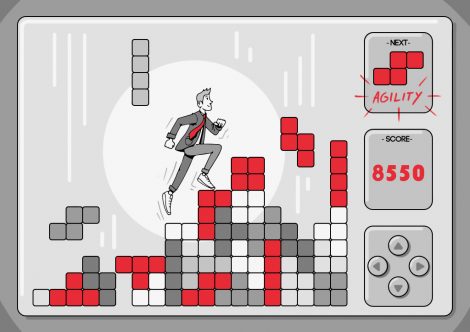Gamification is (not) an easy way to improve eLearning

The use of Gamification is becoming increasingly popular, especially in some areas of human relations management. But how effective is the use of game elements in recruiting or learning? Interesting findings can be found in science. The answer: It depends. First and foremost, the employee’s intrinsic motivation should be addressed.
Gamification is on everyone’s lips currently. More and more companies are using the method because it is understood as a simple, cost-effective tool to increase employee motivation and commitment. In HR, it has been used not only in personnel selection and recruiting, but also in learning and instruction. Critics say, however, that gamification does not appeal to every employee, that the focus on extrinsic rewards is not long-lasting, and that there is a danger of encouraging unwanted behavior. Empirical research comes to differentiated conclusions.
By gamification we mean the use of game design elements in a non-gaming context with the aim of increasing the involvement and motivation of employees (Deterding et al., 2011; Marache-Francisco, 2014). Usually, a basic gamification design element is commonly applied, namely the collection of points that the user earns by completing a task or learning unit (Koivisto & Hamari, 2019; Majuri et al., 2018). Once a certain number of points has been achieved, employees are rewarded with virtual trophies, awards or achievements. In addition, rankings and a variety of other features such as expiring timers and performance feedback are often used. The aim is to provide the user with a game-like experience. Therefore, the method is particularly suitable for making virtual programs more appealing (Koivisto & Hamari, 2019). In HR, gamification is currently used primarily in recruiting and personnel selection, performance management, instruction and in training and development programs (Saha, 2017).
The Learning Experience is perceived differently
The main motivator for gamification in eLearning is the design of learning programs that are appealing and fun, since such learning environments are strongly correlated with increased learning success (Ebner & Holzinger, 2007; Prensky, 2010). Gamification elements in training programs result in a learning experience that is perceived as comprehensive, rewarding and applicable (Pappas, 2013). In one of the most comprehensive literature analyses on gamification to date, Koivisto and Hamari (2019), analyzed 819 publications and concluded that gamification achieved mostly positive results compared to conventional programs, especially in terms of the number of correct outcomes achieved by participants, the time taken to complete the training, and the participation in the program. Nevertheless, the authors stress that these results should be treated with caution, as a remarkable number of studies also produce mixed results. From this it can be concluded that the individual experiences and outcomes of participants vary widely (Koivisto & Hamari, 2019).
Gamification must be individually tailored
Deterding (2015) concludes that the effect of gamification on the individual, in addition to personal and demographic characteristics, is highly dependent on the type of activity performed in the program, environmental factors, and the specific situation in which the system is used. He criticizes that gamification guidelines and frameworks tend to attribute an intended effect to a particular design element. Saha (2017) stresses that gamification can lead to false incentives and a negative effect on learning motivation. Other studies also conclude that the method must be applied in a way that addresses the intrinsic motivation of the employees in question so that the method can be used effectively in the longer term (Bhattacharyya et al., 2018). The correct conception of a gamified learning programme therefore requires time-consuming research and planning. Furthermore, high costs can arise for production, equipment, software and training of the instructors.
Nicholson (2014) refers to the custom-tailored approach as Meaningful Gamification and describes strategies for implementing and recognizing it. Serious Gamification is intended to give employees autonomy so that they can freely decide when, where and on which device they want to use the program (Play & Choice). Furthermore, a narrative should be implemented that supports the feeling of curiosity and excitement (exposure). In addition, the amount and quality of information made available to employees increases their commitment to the system (information). Other key features are ways to ensure social bonding between employees, such as chat rooms, discussion forums or other platforms (engagement). Finally, it must be ensured that employees can retroactively view the learning path they have taken so that learnings can be anchored sustainably (reflection).
A consideration for the future
Recent studies agree that meaningful gamification has a strong positive impact on younger generations, in particular Generation Y, as it addresses their needs such as autonomy, transparency, curiosity and social recognition (Bhattacharyya et al., 2018; Jain, 2018). Gamification could play a particularly important role in this context, because the involvement, development and motivation of future generations is considered to be one of the key challenges for human resources work in the future (Hershatter & Eppstein, 2010).
In summary, it can be said that HR professionals can make learning and training programmes more fun and acceptable for employees through meaningful gamification without undermining their credibility (Saha, 2017). Accordingly, the method is recommended when digitization already leads to the implementation of technological solutions to increase efficiency, minimize administrative burdens and provide training at lower cost to an ever-increasing number of employees. If providers of gamification and decision makers within companies do not opt for the quick win, but instead design customized gamification, the method could evolve into an approach that sustainably motivates employees in their roles and tasks and leads to more effective learning behavior.
Sources:

